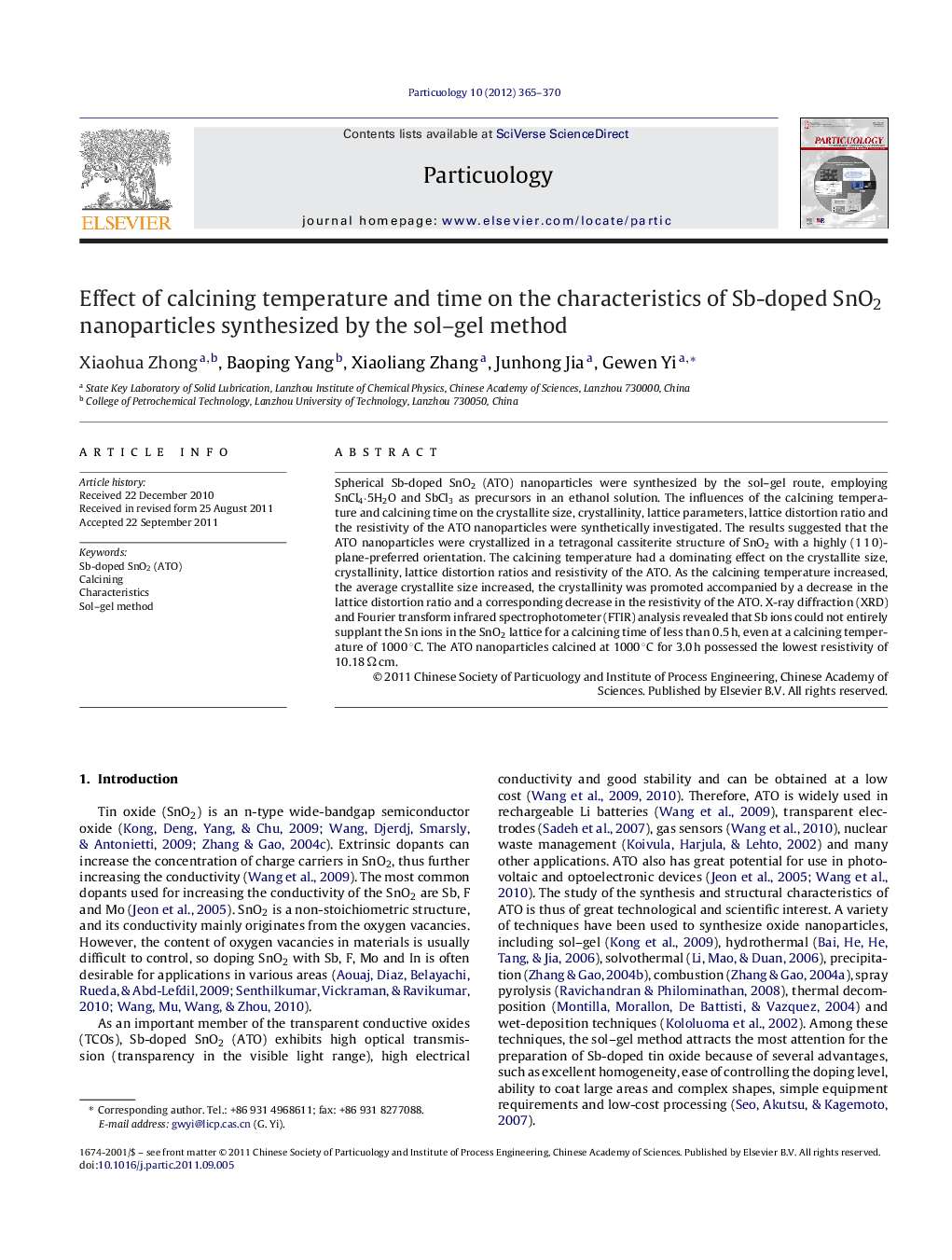| Article ID | Journal | Published Year | Pages | File Type |
|---|---|---|---|---|
| 672152 | Particuology | 2012 | 6 Pages |
Spherical Sb-doped SnO2 (ATO) nanoparticles were synthesized by the sol–gel route, employing SnCl4·5H2O and SbCl3 as precursors in an ethanol solution. The influences of the calcining temperature and calcining time on the crystallite size, crystallinity, lattice parameters, lattice distortion ratio and the resistivity of the ATO nanoparticles were synthetically investigated. The results suggested that the ATO nanoparticles were crystallized in a tetragonal cassiterite structure of SnO2 with a highly (1 1 0)-plane-preferred orientation. The calcining temperature had a dominating effect on the crystallite size, crystallinity, lattice distortion ratios and resistivity of the ATO. As the calcining temperature increased, the average crystallite size increased, the crystallinity was promoted accompanied by a decrease in the lattice distortion ratio and a corresponding decrease in the resistivity of the ATO. X-ray diffraction (XRD) and Fourier transform infrared spectrophotometer (FTIR) analysis revealed that Sb ions could not entirely supplant the Sn ions in the SnO2 lattice for a calcining time of less than 0.5 h, even at a calcining temperature of 1000 °C. The ATO nanoparticles calcined at 1000 °C for 3.0 h possessed the lowest resistivity of 10.18 Ω cm.
Graphical abstractFigure optionsDownload full-size imageDownload as PowerPoint slideHighlights► Calcining temperature has a dominant effect on the crystallite size, crystallinity, lattice distortion ratios and resistivity of the Sb-doped SnO2 (ATO). ► The ATO nanoparticles calcined at 1000 °C for 3.0 h possess the lowest resistivity of 10.18 Ω cm.
